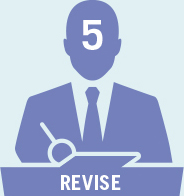15.1 Chapter Introduction
378
15
CHAPTER OUTLINE
Speech Delivery Modes
Managing Your Speech Delivery
Choosing and Using Presentation Aids
Evaluating Speeches and Managing Feedback
Delivering Your Speech
B etween the kickball games, brownie bake-
1 The chapter opener is crafted from Lorch (2015) and www.dosomething.org.
Any employee can sign up to present at a Wednesday innovation meeting. Presentations follow a standard format, consisting of PowerPoint slides with graphs, recommendations, and plenty of humor. It’s well understood that speakers must be engaging, upbeat, and persuasive. DoSomething employees like to have fun while pursuing great ideas.
Employees know it will take time to prepare a speech that will have a powerful impact on the staff. After composing a presentation, staff members will meet with other coworkers to rehearse and get feedback. As a DoSomething employee, Julie Lorch (2015) observed:
Presenters practice ahead of time and refine their ideas. They try to predict potential criticism and how certain individuals will react, and come up with explanations ahead of time. By the time Wednesday morning rolls around, presenters are really well prepared—
During their presentation practice, speakers learn whether they are talking too fast or too slow. Their coworkers will point out when their posture slumps or when their hands are in their pockets. Presenters earn high praise during practice when they maintain eye contact and avoid reading from their notes. Employees also discover that rehearsal combats their nervousness about presenting at the meeting. This time devoted to practice and feedback translates into engaging and thought-
DoSomething employees are fortunate to have a leader who values public speaking. CEO Aria Finger is known to be an energetic and confident speaker who is “the master of long intentional pauses” that keep audiences attentive to her messages (Lorch, 2015, p. 29). She inspires employees by practicing and developing her own public-
Innovation meeting presentations help DoSomething remain a leader in supporting social causes. The organization has reached over 4 million teens and young adults who organize social action projects related to homelessness, bullying, drug use, and a variety of other issues.
379

380
DoSomething employees understand an essential requirement for improving their public-
How to deliver a speech effectively
Ways to connect with your audience
Ideas for managing speech anxiety
The process for selecting and using presentation aids
How to evaluate others’ speeches and use feedback to improve your own presentation skills

|

|

|

|

|
| Choose your topic, adapt to your audience | Plan your strategy, conduct your research, evaluate your sources | Develop your speech structure and supporting materials, prepare your visual aids | Create speaking notes, practice aloud, work on delivery | Process feedback from others and self- |
edel/Shutterstock